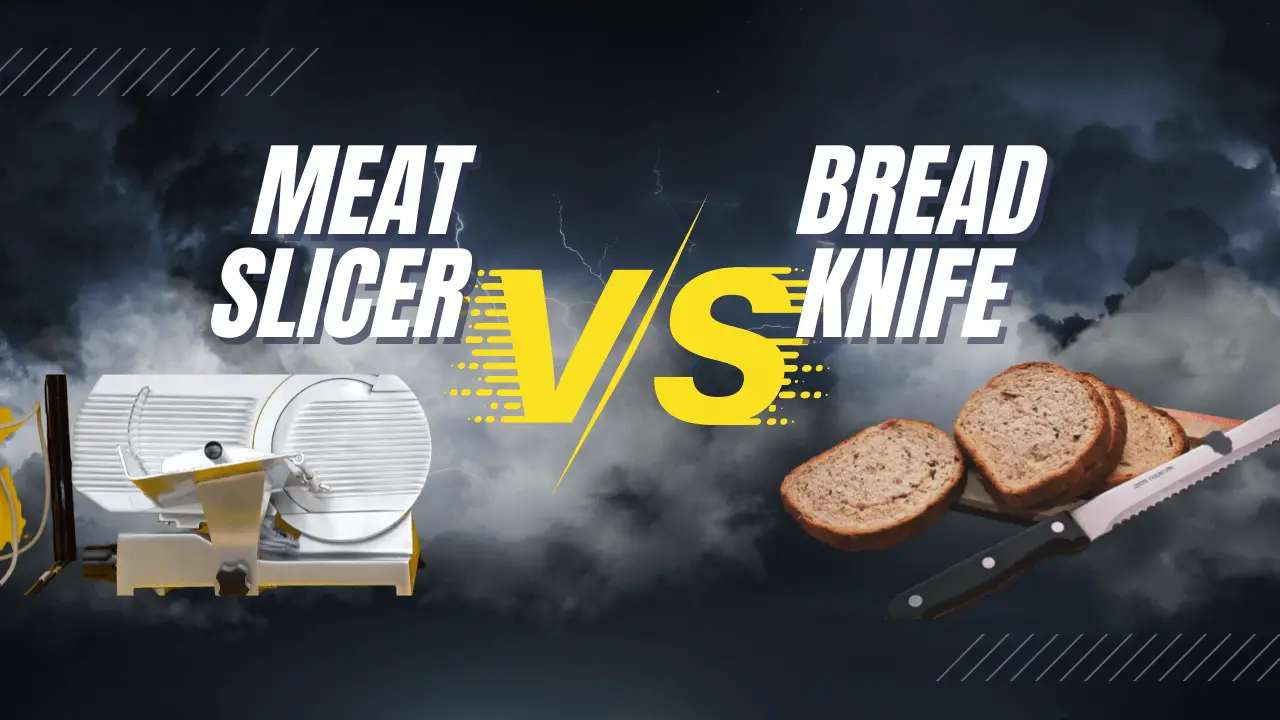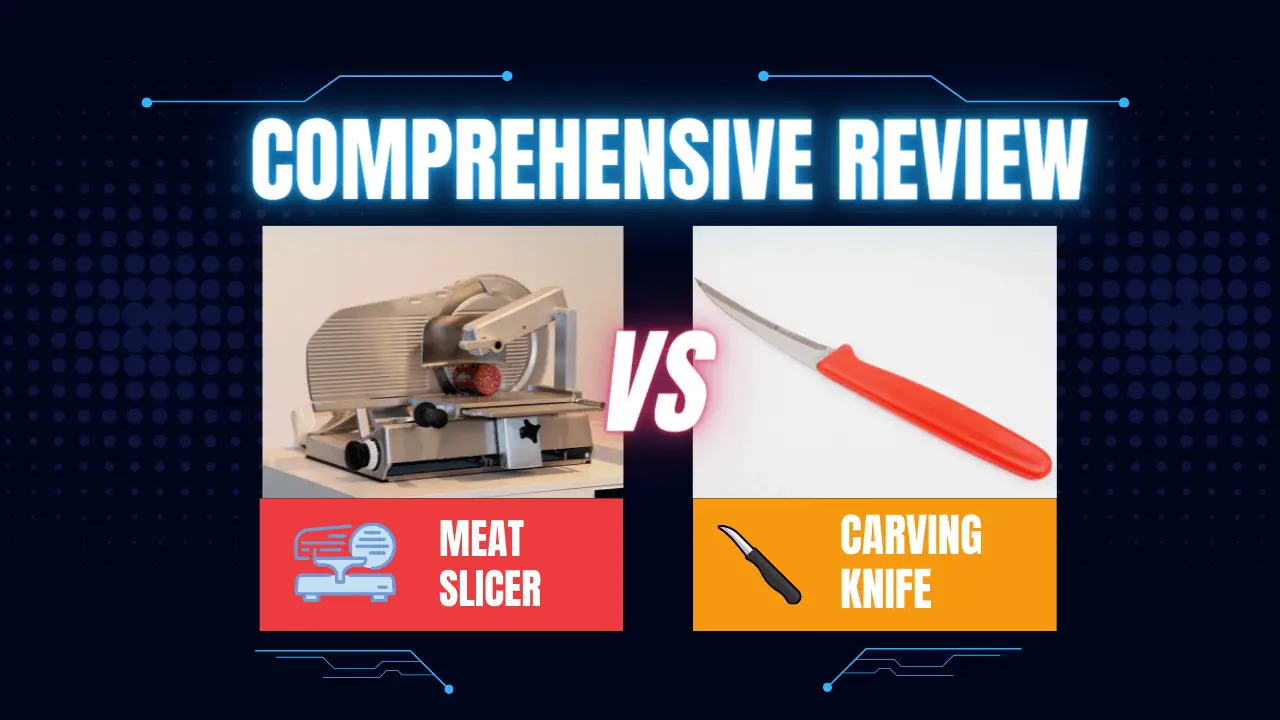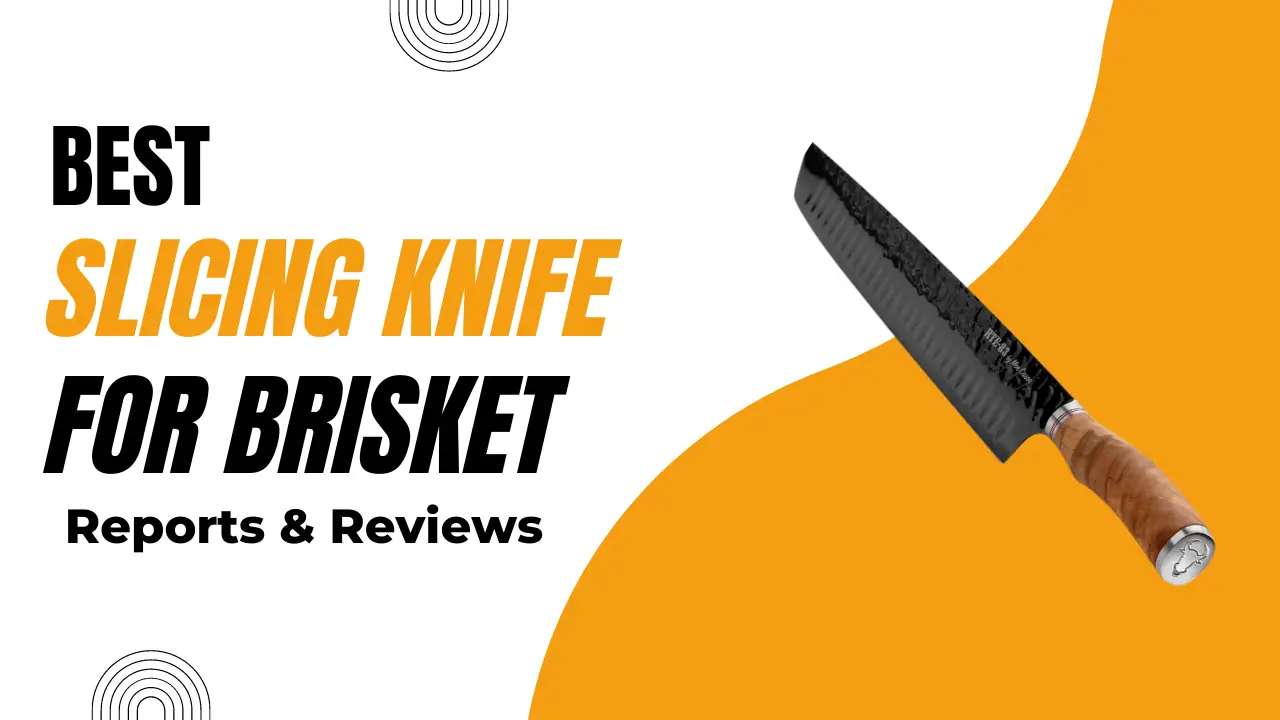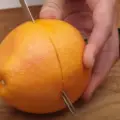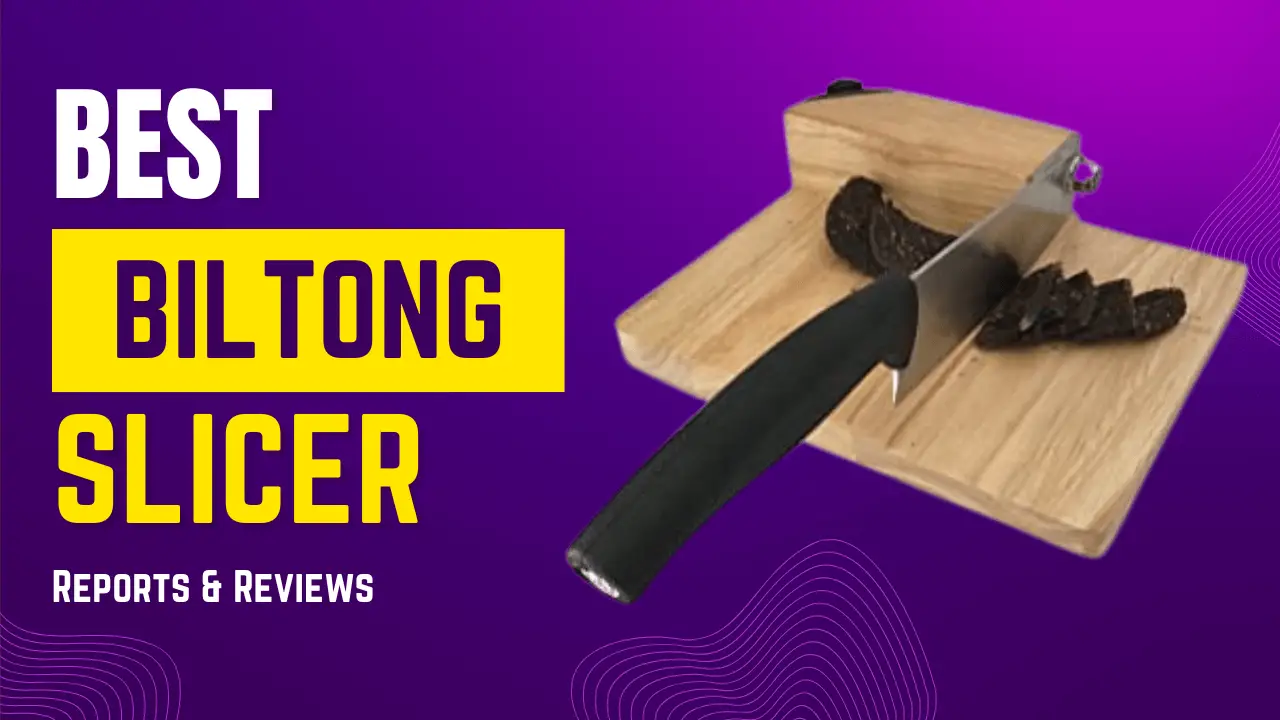Sujihiki and Slicer knives are both excellent options for precise slicing in the kitchen. The Sujihiki knife, with its thin, narrow, and long blade, is perfect for cutting boneless animal protein, filleting fish, and producing tear-free slices. On the other hand, the Slicer knife is designed for slicing larger chunks of meat, such as ham or brisket, and offers more flexibility for delicate slices of cooked meat and fruits. Both knives have their unique features and benefits, so choose the one that best suits your slicing needs and enjoy the art of perfect cuts in your culinary endeavors.
Here are the differences between two popular options: the Sujihiki and the Slicer. Understanding the unique features and uses of these knives will elevate your culinary experience. Let’s find the perfect blade for your slicing needs!
Sujihiki Knife: Master of Precision Slicing
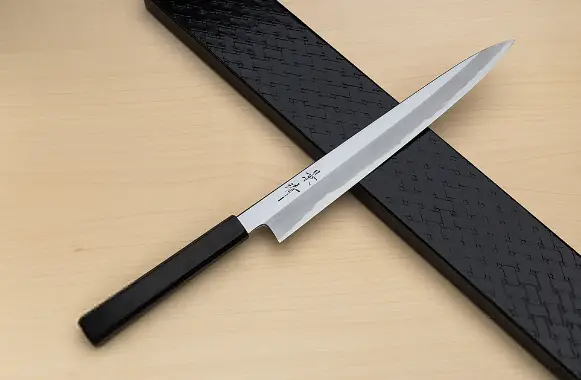
The Versatility of Sujihiki: Mastering Precision Slicing
Sujihiki is a Japanese slicing knife that has gained widespread acclaim for its exceptional thinness, narrowness, and long blade. Its unique design and features make it a must-have tool in any kitchen. Here are the details of why Sujihiki is renowned for its versatility and precision.
Tear-Free Precision Slicing
The defining feature of the Sujihiki knife is its slim blade shape, which plays a crucial role in achieving tear-free cuts.
- Reduced Friction: The thin blade shape minimizes friction when slicing boneless animal proteins, ensuring that the cuts are smooth and tear-free. This is particularly important when cutting delicate fish fillets, where precision is paramount.
Beyond Fish: A Multifunctional Slicing Tool
- Carving: Sujihiki excels at carving various types of meat, allowing you to create beautifully sliced portions for serving. Its sharp and narrow blade enables precise control, resulting in clean cuts and presentation-worthy slices.
- Slicing: Whether it’s slicing roasts, poultry, or other boneless meats, Sujihiki delivers exceptional results. The thinness of the blade reduces resistance and allows for effortless slicing, making it a go-to knife for meat lovers.
- Filleting: When it comes to filleting fish or removing unwanted bones, Sujihiki’s precise blade comes in handy. Its sharp edge ensures clean and accurate cuts, enabling you to prepare fish fillets with ease.
- Trimming: Sujihiki’s versatility extends to trimming tasks, such as removing excess fat or skin from meats and fish. It’s narrow profile and sharp tip provide the precision required for delicate trimming work.
The Western Equivalent: Bridging Culinary Traditions
The Sujihiki knife holds an intriguing character that makes it an appealing choice for both Japanese and Western cuisine enthusiasts.
- Double Bevel Edge: Sujihiki shares a blade profile similar to the Yanagiba, a traditional Japanese sushi knife, but with a double bevel edge. This unique attribute gives Sujihiki the advantage of being the perfect Western equivalent to the Yanagiba.
- Exploring Japanese Culinary Techniques: For those venturing into Japanese cooking and seeking to master the art of sushi and sashimi preparation, Sujihiki offers a seamless transition. Its blade profile and double bevel edge allow for similar techniques and precision cuts.
The Features of Sujihiki: A Closer Look at This Exceptional Knife
Thin Blade: Effortless Slicing
The Sujihiki boasts an exceptionally thin blade, measuring around 2mm wide even at its thickest part (the spine). This thinness plays a vital role in achieving effortless slicing, allowing the blade to glide through boneless meat with ease. The reduced resistance during slicing ensures smoother cuts and enhances the overall experience in the kitchen.
Delicate Edge: Precision at Its Finest
Unlike many double-bevel knives, the edge of the Sujihiki is also thin. It is ground at a lower angle, resulting in a long, thin, and razor-sharp edge. This exceptional sharpness enhances precision when performing slicing tasks. However, it’s important to note that due to the delicate nature of the edge, it’s advisable to avoid cutting dense ingredients that may compromise its longevity. By handling the Sujihiki with care and using it for its intended purposes, you can maintain its delicate edge for optimal performance.
Double Bevel Edge: Versatility in Cutting
One of the defining characteristics of the Sujihiki knife is its double bevel edge. This feature sets it apart as a versatile all-rounder knife suitable for cutting various types of meat. Unlike a single-bevel knife, which is designed for specific purposes, the double-bevel edge of the Sujihiki allows it to excel in multiple cutting tasks. It strikes a balance between the precision required for intricate slicing and the versatility needed for everyday use. It’s worth noting that a single bevel Sujihiki would essentially transform into a Yanagiba knife, as the resemblance between the two is closely aligned.
Needle-Like Design: Precise and Nimble
The Sujihiki showcases a distinctive needle-like design. With its long and narrow blade, it resembles a needle, symbolizing the precision it offers in slicing. The cutting edge of the Sujihiki is relatively flat throughout most of the blade, with a slight curvature towards a pointy tip. This design enhances control and maneuverability during slicing tasks, allowing for precise cuts and intricate work.
Length Options: Tailoring to Your Needs
Sujihiki knives are available in various lengths, typically ranging from 8 to 12 inches. When selecting the appropriate size, it’s important to consider your preferred cutting technique. The Sujihiki is designed for a single pulling motion from heel to tip, utilizing the entire length of the blade. The length of the knife determines the range and extent of your slicing capabilities, allowing you to customize it according to your specific needs and preferences.
Lightweight and Balanced: An Enjoyable Slicing Experience
Weighing around 120 grams, the Sujihiki is a lightweight knife that offers a comfortable and enjoyable slicing experience. The thin and light blade, combined with its well-balanced construction, reduces the strain and fatigue often associated with prolonged slicing tasks. The balanced weight distribution ensures optimal control and maneuverability, allowing you to achieve precise cuts effortlessly.
Slicing Technique with Sujihiki: Unleashing Precision and Delicacy
To truly harness the power of your Sujihiki knife, it’s crucial to master the proper slicing technique. By understanding and implementing the following techniques, you can maximize the knife’s potential and achieve exceptional precision and delicacy in your cuts:
Pulling Motion: Unleashing Precision
The Sujihiki knife is best utilized with a pulling motion technique. When slicing, start from the heel or belly of the blade and move in a sweeping motion toward the tip. This pulling motion allows for precise control and even pressure throughout the cut. By pulling the blade towards you, you can ensure clean and accurate slices, especially when working with boneless meats and delicate ingredients.
Thinly Sliced Delicacies: Expanding Culinary Possibilities
The triangular end of the Sujihiki knife holds significant advantages when it comes to preparing a wide variety of meats and ingredients.
- Cleaning Up Meat: From sirloin steaks to chicken breasts and large fish fillets, the Sujihiki’s triangular end excels in cleaning up and trimming excess fat, skin, or connective tissues. The sharp tip allows for precise removal, ensuring that your cuts are clean and aesthetically pleasing.
- Intricate Slicing Tasks: The sharpness and shape of the Sujihiki’s tip resemble that of a specialized slicing knife. This makes it an ideal tool for intricate slicing tasks that require finesse and precision. Whether you’re creating thin, decorative slices or delicately portioning ingredients, the Sujihiki’s tip ensures meticulous results.
Slicer Knife: Precision Slicing Made Easy
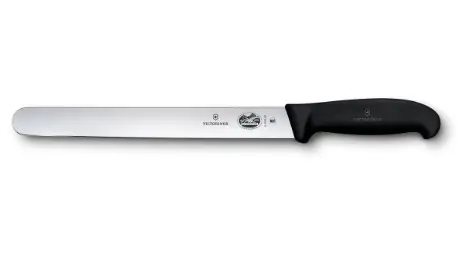
Understanding the Slicer Knife: Precision Slicing Made Easy
While the slicer knife may bear a resemblance to the carving knife, it possesses distinctive features that set it apart. Let’s know what makes the slicer knife unique and why it’s an invaluable tool in the kitchen:
Thinner and More Flexible: Precision Cuts
Slicer knives are characterized by their thinner and more flexible blades compared to carving knives. This design enables precise and delicate cuts of meat, fruits, and vegetables. The thinner blade reduces resistance during slicing, allowing for greater control and the ability to achieve thin and even slices with ease. Whether you’re slicing through roast beef, ripe tomatoes, or delicate fish fillets, the slicer knife’s thin and flexible blade ensures precision and finesse in every cut.
Straight Edge with Scallops: Smooth Slicing
Unlike carving knives, slicers often feature straight edges with scallops. These scallops, also known as Granton or kullenschliff edges, are small indentations or hollowed-out sections along the length of the blade. The purpose of these scallops is to minimize friction between the blade and the food being sliced. This unique design feature allows for smoother slicing, as it reduces the amount of food sticking to the blade. The scalloped edge also creates air pockets, preventing slices from tearing or sticking together. With a slicer knife’s straight edge and scallops, you can achieve clean, effortless cuts and maintain the integrity of your ingredients.
Ergonomic Design: Comfort and Control
Slicer knives are designed with user comfort and control in mind. They often come equipped with ergonomic handles that provide a non-slip and comfortable grip during slicing tasks. The ergonomic design allows for extended use without straining the hand or causing discomfort. Additionally, slicer knives are well-balanced, ensuring optimal weight distribution between the handle and the blade. This balance enhances control, maneuverability, and overall cutting precision. With a slicer knife’s ergonomic design, you can slice with confidence, knowing that the knife will feel comfortable in your hand and offer exceptional control.
The Benefits of a Slicer Knife: Elevating Your Slicing Experience
When it comes to achieving delicate, precise cuts in the kitchen, a slicer knife offers a range of advantages. Here are the benefits of using a slicer knife and why it should be a staple in your culinary arsenal:
Delicate Slicing: Precision and Finesse
One of the primary benefits of a slicer knife is its ability to provide flexibility for thinner, more delicate slices. Whether you’re slicing cooked meats, ripe fruits, or tender vegetables, the slicer knife’s design allows for precise and controlled cuts. Its thinner and more flexible blade effortlessly glides through ingredients, ensuring that each slice is consistent and visually appealing. With a slicer knife, you can elevate your presentation and create culinary masterpieces with finesse and precision.
Ideal for Wide Cuts: Handling Large Pieces of Meat
When you encounter wide pieces of meat, such as a whole ham or a brisket, a slicer knife becomes your go-to tool. The length and narrowness of the slicer knife enable you to make wide, uninterrupted cuts, maintaining the integrity and shape of the meat. With its long and slender blade, a slicer knife provides the control and precision required to slice through large cuts of meat effortlessly. Whether you’re preparing a holiday feast or a family barbecue, a slicer knife ensures consistent, professional-looking slices.
Multifunctional Blade: Versatility in the Kitchen
Slicer knives is not limited to specific tasks. They are incredibly versatile and can be used for a wide range of culinary endeavors. From slicing roasts to preparing fruits and vegetables, a slicer knife is a valuable tool in the kitchen. Its precise cutting edge allows you to achieve uniform slices of roasts, whether it’s beef, pork, or poultry. Additionally, a slicer knife’s narrow profile and sharp blade make it ideal for effortlessly slicing through various fruits and vegetables, ensuring even thickness and enhancing the aesthetics of your dishes.
Key Features of a Slicer Knife: Choosing the Perfect Slice
When selecting a slicer knife, it’s important to consider key features that will enhance your slicing experience. Here are the features to keep in mind when choosing the perfect slicer knife for your kitchen:
Blade Length: Tailoring to the Task
Slicer knives typically range between 10 and 14 inches in length. The blade length is an essential consideration as it determines the knife’s suitability for specific cutting tasks. Longer blades, such as those in the 12 to 14-inch range, are well-suited for slicing larger cuts of meat, such as roasts or hams. Conversely, shorter blades, around 10 inches, provide more control for delicate cuts and smaller ingredients. Consider the types of cuts you frequently make in the kitchen and choose a blade length that aligns with your needs.
Tip Shape: Rounded or Pointed
Slicer knives can feature either rounded or pointed tips. The choice between the two depends on personal preference and the specific tasks you intend to perform. Rounded tips offer added safety, minimizing the risk of accidental punctures or injuries. They are particularly useful when working with delicate ingredients or in situations where precision cuts are required. On the other hand, pointed tips provide more control and maneuverability, allowing for intricate cuts and reaching tight corners. Consider your comfort level and the nature of your slicing tasks when deciding between a rounded or pointed tip.
Flexibility: Precision and Adaptability
One of the distinguishing features of a slicer knife is its flexibility. Slicer knives are designed to offer more flexibility than other types of knives. This flexibility enables precise cuts into cooked meats and fruits, allowing for thin and uniform slices. The blade’s flexibility ensures that it can easily adapt to the contours of the food being sliced, resulting in consistent cuts and a better overall slicing experience. When selecting a slicer knife, look for a balance between flexibility and rigidity to achieve optimal control and precision.
Thickness: Thin Blades for Smooth Slicing
Slicer knives are characterized by their thin blades, typically measuring between 0.30 and 0.35mm. The thinness of the blade is crucial in achieving smooth and effortless slicing. Thinner blades reduce resistance when cutting through ingredients, resulting in cleaner slices and less effort required. This thinness allows for greater precision and control, ensuring that each cut is uniform and visually appealing. When choosing a slicer knife, consider the thinness of the blade as a crucial factor in achieving smooth and consistent slices.
Granton or Scalloped Edge: Reducing Friction
Many slicer knives feature Granton or scalloped edges along the blade. These small hollowed-out sections or indentations help reduce friction between the blade and the food being sliced. The presence of these scallops creates air pockets, preventing slices from sticking together and ensuring smoother cuts. The Granton or scalloped edge is particularly beneficial when slicing moist or sticky foods. It allows for improved airflow, reducing drag and enhancing the overall slicing experience.
Performance: Excel at Precision Slicing
Slicer knives are specifically designed for independent use, excelling at precise slicing tasks. They are optimized to deliver clean, thin slices with minimal effort. Whether you’re slicing roasts, fruits, or vegetables, a slicer knife’s design, and construction are tailored to ensure exceptional performance. The combination of features, such as blade length, tip shape, flexibility, thickness, and Granton or scalloped edges, culminated in a knife that is designed to deliver outstanding precision and control during slicing tasks.
FAQs:
What is the difference between a Sujihiki knife and a slicer knife?
Sujihiki is a Japanese slicing knife with a thin, narrow, and long blade, ideal for tear-free cuts and versatile culinary tasks. A slicer knife, on the other hand, has a thinner and more flexible blade, a straight edge with scallops, and is designed for delicate slicing and wide cuts.
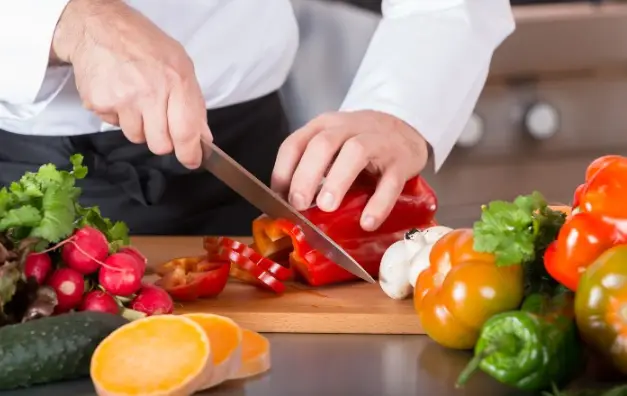
Can I use a Sujihiki knife for slicing vegetables and fruits?
Yes, a Sujihiki knife can be used for slicing vegetables and fruits. Its thin blade and precision make it well-suited for achieving thin and uniform slices.
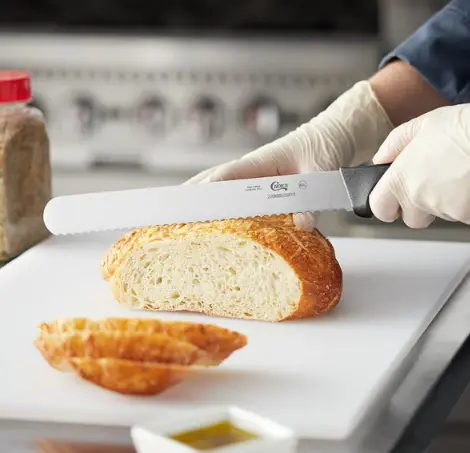
Are slicer knives suitable for slicing bread?
While slicer knives can be used for slicing bread, they are not specifically designed for this task. Bread knives, with their serrated edges, are better suited for clean and effortless bread slicing.
What is the ideal size for a slicer knife?
The ideal size for a slicer knife depends on personal preference and the types of ingredients you frequently slice. Blade lengths typically range between 10 and 14 inches, allowing for versatility in handling different sizes of meats and produce.
Can a slicer knife be used for other culinary tasks besides slicing?
Yes, slicer knives have a multifunctional blade that can be used for various culinary tasks, including slicing roasts, preparing fruits and vegetables, and achieving precise cuts in delicate ingredients.
Conclusion:
The Perfect Slicing Knife Awaits You! Whether you choose the Sujihiki or the Slicer, both knives offer unique benefits to enhance your slicing endeavors in the kitchen. Consider your specific needs and preferences, from the type of cuts you frequently make to the length and flexibility required. Investing in the right slicing knife will bring precision and joy to your culinary adventures.
Key Takeaways:
- Sujihiki knives are renowned for their thin, narrow, and long blades, making them perfect for tear-free cuts and versatile culinary tasks beyond just fish.
- The key features of a Sujihiki knife include a thin blade, delicate edge, double bevel edge, needle-like design, various length options, and lightweight and balanced construction.
- Mastering the pulling motion technique is essential for maximizing the effectiveness of a Sujihiki knife and achieving precise slices.
- Slicer knives offer flexibility for delicate slicing of cooked meats, fruits, and vegetables, and are ideal for wide cuts such as carving ham or slicing brisket.
- The key features of a slicer knife include blade length, tip shape, flexibility, thickness, Granton or scalloped edges, and independent performance.
- Slicer knives are multifunctional, versatile tools that excel at precise slicing tasks and can be used for a range of culinary endeavors.
- Consider your specific needs, cutting techniques, and preferences when choosing a slicer knife, ensuring it aligns with the types of cuts and ingredients you frequently work with.
- Proper maintenance, including honing and handwashing, will help preserve the sharpness and longevity of both Sujihiki and slicer knives.
- When using knives, always prioritize safety, practice proper techniques, and exercise caution to avoid accidents.
Pros And Cons, Similarities And Differences:
| Sujihiki Knife | Slicer Knife | |
|---|---|---|
| Pros | – Thin blade for tear-free cuts | – Thinner and more flexible blade for delicate slicing |
| – Versatile for carving, slicing, filleting, and trimming | – Ideal for wide cuts such as carving ham or slicing brisket | |
| – Western equivalent to Japanese Yanagiba knife | – Multifunctional blade for various culinary tasks | |
| – Lightweight and well-balanced for comfortable slicing | – Straight edge with scallops for smoother slicing | |
| – Suitable for precise slicing of fish and other proteins | ||
| Cons | – Not suitable for cutting dense ingredients | – Not as effective for precise slicing of fish and proteins |
| – Limited to boneless meats and ingredients without bones | ||
| Similarities | – Thin blades for precise cuts | – Thin blades for precise cuts |
| – Long and narrow blade design | – Long and narrow blade design | |
| – Can be used for carving tasks | – Can be used for carving tasks | |
| – Offer flexibility for delicate slicing | – Offer flexibility for delicate slicing | |
| – High-quality construction for durability | – High-quality construction for durability | |
| Differences | – Sujihiki has a double bevel edge and resembles a Yanagiba knife | – Slicer knife has a straight edge with scallops |
| – Sujihiki is preferred for slicing fish and other proteins | – Slicer knife excels at wide cuts and delicate slicing tasks | |
| – Sujihiki is lightweight and balanced for precise slicing | – Slicer knife is more versatile for a range of tasks | |
| – Sujihiki requires a pulling motion for optimal slicing |
References And Citations:
Here are some external links related to the above article:
- Different Types of Kitchen Knives Explained – https://madeincookware.com/blogs/types-of-kitchen-knives Anchor text: Slicer Knife
- Mastering the Pulling Motion Technique for Sujihiki Knives – https://japanesechefsknife.com/pages/how-to-sharpen Anchor text: pulling motion technique

John Hebdon is a food enthusiast, passionate chef, and author of various articles and blog posts related to food and cooking. With a deep love for all things culinary, John’s blog serves as a platform to share his extensive kitchen experiences with a broader audience.
In addition to his culinary expertise, John has a flair for writing and a natural ability to share his passion for food with others. His articles and blog posts are informative, engaging, and packed with practical tips for readers of all skill levels.
As a food enthusiast and writer, John is always on the lookout for new and exciting culinary experiences. Whether it’s trying out a new restaurant, experimenting with a new recipe, or simply sharing a favorite dish with friends and family, John is always eager to explore and share the world of food with others.

